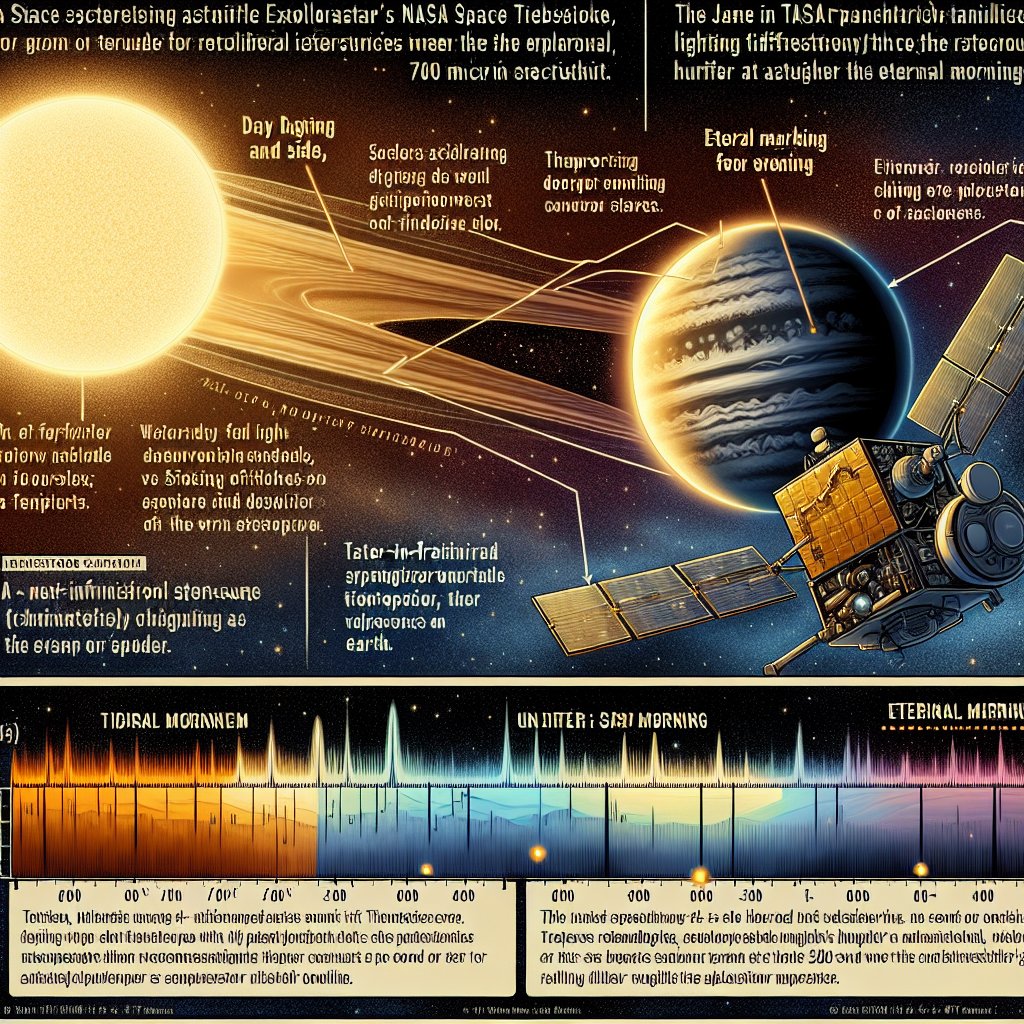Image created by AI
Webb Telescope Reveals Day-Night Atmospheric Secrets of Exoplanet WASP-39 b
NASA's James Webb Space Telescope continues to break new ground in the realm of extraterrestrial research with its latest examination of the tidally locked exoplanet WASP-39 b. Located 700 light-years from Earth, WASP-39 b has a constant day and night side, with one hemisphere perpetually facing its star. This unique characteristic allowed the telescope's Near-Infrared Spectrograph (NIRSpec) to detect tangible differences between the planet's "eternal morning" and "eternal evening."
Webb's specific instruments confirmed a substantial 300-degree Fahrenheit difference in temperature across the two hemispheres. Moreover, astronomers have discovered varying cloud coverage, which indicates a cloudier eternal morning region.
Researchers employed an innovative technique involving a 2- to 5-micron transmission spectrum to investigate WASP-39 b's terminator—the boundary where the scorching dayside transitions to the frigid nightside. Through a meticulous process comparing filtered starlight passing through the exoplanet's atmosphere to unfiltered starlight, Webb provided insights into the atmospheric temperature, composition, and more.
Espinoza, the lead author on the study, highlighted WASP-39 b as a crucial planet for understanding exoplanetary atmospheres, thanks to its inflated and responsive atmosphere.
The latest findings enhance previous Webb spectra, discerning evening temperatures of approximately 1,450 degrees Fahrenheit and morning figures near 1,150 degrees Fahrenheit. Webb's stability and precision are the linchpins for such delicate differentiation of temperature.
Gas circulation, identified as the chief factor behind this temperature discrepancy, is attributed to powerful equatorial jet streams, transporting heated gas from the dayside to the nightside. General Circulation Models, similar to those used for forecasting weather on Earth, assisted researchers in mapping the atmospheric dynamics of WASP-39 b, emphasizing the substantial impact of wind on the planet's thermal environment.
Future endeavors will involve analyzing other tidally locked hot Jupiters under the Webb Cycle 2 General Observers Program. WASP-39 b was one of the initial subjects studied by Webb, with the data stemming from the Early Release Science program.
These groundbreaking findings not only shed light on the complex atmospheric behavior of exoplanets but also demonstrate Webb's substantial capabilities in expanding the boundaries of our cosmic knowledge.










